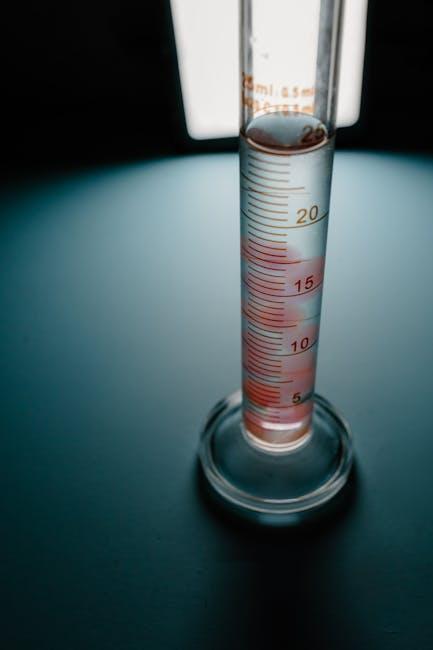Imagine driving down a winding road, the scenery blurring past as you navigate each turn with confidence. Behind this seamless control lies a crucial, often overlooked hero: your brake fluid. Just as the bloodstream carries vital nutrients, brake fluid ensures your vehicle’s stopping power remains responsive and reliable. But how do you know if this invisible guardian is doing its job? In this guide, we will walk you through the simple yet essential steps to check your brake fluid level, keeping you both safe and informed on every journey.
Table of Contents
- Understanding the Importance of Brake Fluid in Vehicle Safety
- Identifying the Location of the Brake Fluid Reservoir
- Preparing Your Vehicle for a Safe Brake Fluid Check
- Step-by-Step Guide to Measuring Brake Fluid Levels Accurately
- Interpreting Brake Fluid Levels and When to Top Up
- Choosing the Right Brake Fluid for Your Vehicle and How to Add It Safely
- Q&A
- Final Thoughts

Understanding the Importance of Brake Fluid in Vehicle Safety
Brake fluid plays a crucial role in ensuring the hydraulic system within your vehicle functions correctly. It transmits the force created when you press the brake pedal, activating the braking mechanism at each wheel. Without adequate and good-quality brake fluid, your stopping power diminishes drastically, potentially leading to dangerous driving situations. It’s essential to maintain the fluid’s integrity because contaminants, moisture, and air can enter the brake lines, reducing braking efficiency and causing premature wear of brake components.
Routine inspection of your brake fluid helps you catch early signs of trouble and maintain optimal vehicle safety. When checking your fluid level, keep in mind these key points:
- Locate the reservoir: Usually transparent, with markings indicating minimum and maximum fluid levels.
- Check fluid color: Fresh brake fluid is clear or light amber; dark or cloudy fluid suggests contamination.
- Inspect for leaks: Low levels could hint at leaks in the brake system which need immediate attention.
| Fluid Condition | Action Required |
|---|---|
| Clear or Light Amber | No immediate action necessary |
| Dark or Cloudy | Replace fluid soon |
| Below Minimum Level | Top up fluid & inspect for leaks |

Identifying the Location of the Brake Fluid Reservoir
Locating the brake fluid reservoir is the first step to ensuring your vehicle’s braking system functions smoothly. Typically, this translucent container rests near the back of the engine bay, above the brake master cylinder. Depending on the make and model of your car, you might find it nestled close to the firewall, often on the driver’s side. The reservoir is usually made from clear plastic, allowing you to see the fluid level without opening it. Look for a cap marked with “Brake Fluid” or an icon resembling a circle encased by parentheses, symbolizing the brakes.
If you’re unsure where to start, consider this handy checklist to guide your search:
- Open the hood and locate the firewall (the metal panel separating engine and cabin).
- Scan the area near the driver’s side for a small, translucent container with a screw-on cap.
- Check for brake-related markings or symbols on the reservoir cap.
- Refer to your vehicle’s manual for exact positioning and specifications.
| Vehicle Type | Reservoir Location |
|---|---|
| Compact Cars | Near firewall, driver side |
| SUVs & Trucks | Center or driver side, above brake master cylinder |
| Luxury Vehicles | Often hidden under engine covers; consult manual |

Preparing Your Vehicle for a Safe Brake Fluid Check
Before diving under the hood, ensure your vehicle is parked on a flat surface with the engine completely cool. This precaution not only guarantees an accurate brake fluid reading but also protects you from potential burns. Having the ignition off and the parking brake engaged adds an extra layer of safety, preventing any unexpected movement while you inspect the fluid.
Gather essential tools such as a clean rag and a flashlight to illuminate the brake fluid reservoir, which is usually translucent and located near the back of the engine bay on the driver’s side. Be mindful to avoid contamination: never open the reservoir in a dusty or dirty environment, and always clean around the cap before removal to keep out debris that could compromise your brake system’s performance.
- Park on level ground and switch off the engine
- Engage the parking brake for added safety
- Wait for the engine to cool down fully
- Gather a clean rag and a flashlight
- Wipe around the fluid reservoir cap before opening

Step-by-Step Guide to Measuring Brake Fluid Levels Accurately
Begin by locating the brake fluid reservoir under your vehicle’s hood – it’s usually near the back of the engine bay, close to the firewall. Before opening the cap, clean the surrounding area thoroughly to prevent dirt from contaminating the fluid. Using a clean cloth, wipe any grime or debris from the container’s surface. Then, carefully remove the reservoir cap, taking care not to spill the fluid as brake fluid is highly corrosive. Hold the reservoir up to eye level and observe the fluid’s position against the marked indicators labeled “MIN” and “MAX”. The fluid should ideally sit between these two lines for optimal braking performance. If your car has a translucent reservoir, you might be able to see the level without opening the cap, but always double-check by removing it to ensure an accurate reading.
For precision, use a dipstick or a clean, flashlight-assisted method to detect the exact level inside the reservoir. If you notice the brake fluid is below the minimum level, it’s crucial to top it up with the manufacturer-recommended brake fluid type. Avoid mixing different fluid types as this can negatively affect braking efficiency. Additionally, inspect the fluid’s color: fresh brake fluid is typically clear or slightly yellow, but dark or cloudy fluid signals contamination and might require a complete fluid change. To maintain safety and avoid costly repairs, make it a habit to check the brake fluid level as part of your routine maintenance, ideally every few months or before long trips.

Interpreting Brake Fluid Levels and When to Top Up
Understanding what your brake fluid level indicates is crucial for maintaining optimal braking performance and ensuring safety on the road. When checking the reservoir, the fluid should ideally sit between the minimum and maximum markers. A level below the minimum often points to a leak, worn brake pads, or the natural fluid consumption as components wear down. Conversely, a level above the maximum can cause fluid overflow when the brakes heat up, potentially damaging the system. Keep in mind, brake fluid naturally darkens as it ages, which doesn’t necessarily mean you need to top up but may indicate it’s time for a fluid change.
Knowing when to add brake fluid isn’t just about the level but also the fluid’s condition. Here are common signs that a top-up or replacement might be necessary:
- Spongy brake pedal: Indicates air or moisture in the fluid.
- Brake warning light: Often linked directly to fluid levels or sensor alerts.
- Visible leaks: Fluid pools underneath the vehicle.
- Dark or dirty fluid: Reduces braking efficiency and can corrode parts.
| Fluid Level | Suggested Action |
|---|---|
| At or near max | No action needed |
| Between min and max | Monitor regularly |
| Below min | Top up brake fluid and inspect system |

Choosing the Right Brake Fluid for Your Vehicle and How to Add It Safely
When selecting brake fluid, it’s essential to consider the specific requirements set by your vehicle’s manufacturer. Using the wrong type can lead to brake failure or damage to the braking system. Typically, brake fluids come in three popular types: DOT 3, DOT 4, and DOT 5.1, each differing in boiling points and chemical composition. DOT 3 and DOT 4 are glycol-based fluids, whereas DOT 5 is silicone-based and generally not recommended for modern vehicles. Refer to your owner’s manual to identify which type is compatible with your brake system to maintain optimal performance and safe driving conditions.
- Check the label: Always verify the fluid type on the container matches your vehicle’s requirements.
- Use a clean container: Brake fluid absorbs moisture rapidly, so avoid contamination by using only unopened containers.
- Wear gloves and eye protection: Brake fluid is corrosive, so personal safety is a priority while handling it.
Adding brake fluid requires a cautious approach to avoid introducing air or dirt into the system. Begin by locating the master cylinder reservoir, usually found near the firewall in the engine bay. Clean the reservoir cap before opening to prevent contamination. Use a clean funnel and slowly pour the fluid until it reaches the “max” line on the reservoir, making sure not to overfill. After adding, securely replace the cap, and check for any leaks or spills. Remember to dispose of old brake fluid responsibly, as it is hazardous waste.
Q&A
Q&A: How to Check Brake Fluid Level
Q1: Why is it important to check your brake fluid level?
A1: Brake fluid is the lifeblood of your vehicle’s braking system. It transfers the force from your brake pedal to the brake pads, slowing or stopping your car. Low or contaminated brake fluid can lead to reduced braking power or brake failure—so regular checks keep you safe on the road.
Q2: How often should I check my brake fluid?
A2: It’s a good rule of thumb to check your brake fluid every few months or whenever you get an oil change. If you notice a soft brake pedal or warning lights on your dashboard, check it immediately.
Q3: Where do I find the brake fluid reservoir?
A3: Pop your car’s hood and look for a small, usually translucent container near the back of the engine bay, close to the firewall. It’s often labeled “Brake Fluid” and has minimum and maximum marks on the side.
Q4: How do I properly check the brake fluid level?
A4: First, make sure the car is on a level surface and the engine is cool. Clean the reservoir cap to prevent dirt from getting inside, then carefully open it. Check the fluid level against the marks on the side. The fluid should be between the “MIN” and “MAX” lines—never below the minimum.
Q5: What type of brake fluid should I use if it’s low?
A5: Consult your owner’s manual—it will specify the correct brake fluid type, usually DOT 3, DOT 4, or DOT 5.1. Using the wrong type can harm your braking system, so double-check before topping up.
Q6: Can I drive if my brake fluid is low?
A6: It’s best not to. Low brake fluid indicates potential leaks or worn brake pads. Driving with low fluid compromises your brakes, risking your safety and that of others.
Q7: What if I notice the brake fluid looks dirty or dark?
A7: Brake fluid should be clear or slightly amber. If it’s dark, cloudy, or contains particles, it needs to be flushed and replaced by a professional mechanic, as contaminated fluid can damage your brake system.
Q8: Is checking brake fluid something I can do myself, or should I see a mechanic?
A8: Checking the fluid level is easy and DIY-friendly. However, if you notice persistent low levels, leaks, or brake performance issues, consult a professional promptly.
By staying on top of your brake fluid, you help ensure every stop is a safe stop. Your car—and your peace of mind—will thank you!
Final Thoughts
Maintaining the right brake fluid level is a small yet vital step in keeping your vehicle safe and responsive on the road. By taking a few moments to check this often-overlooked fluid, you not only ensure smoother stops but also extend the life of your braking system. So next time you open the hood, remember: a quick brake fluid check is more than routine—it’s peace of mind in every mile. Safe driving!


5 Comments
x6d474
x6d474
q9ktxg
jdt81p
43b9j4